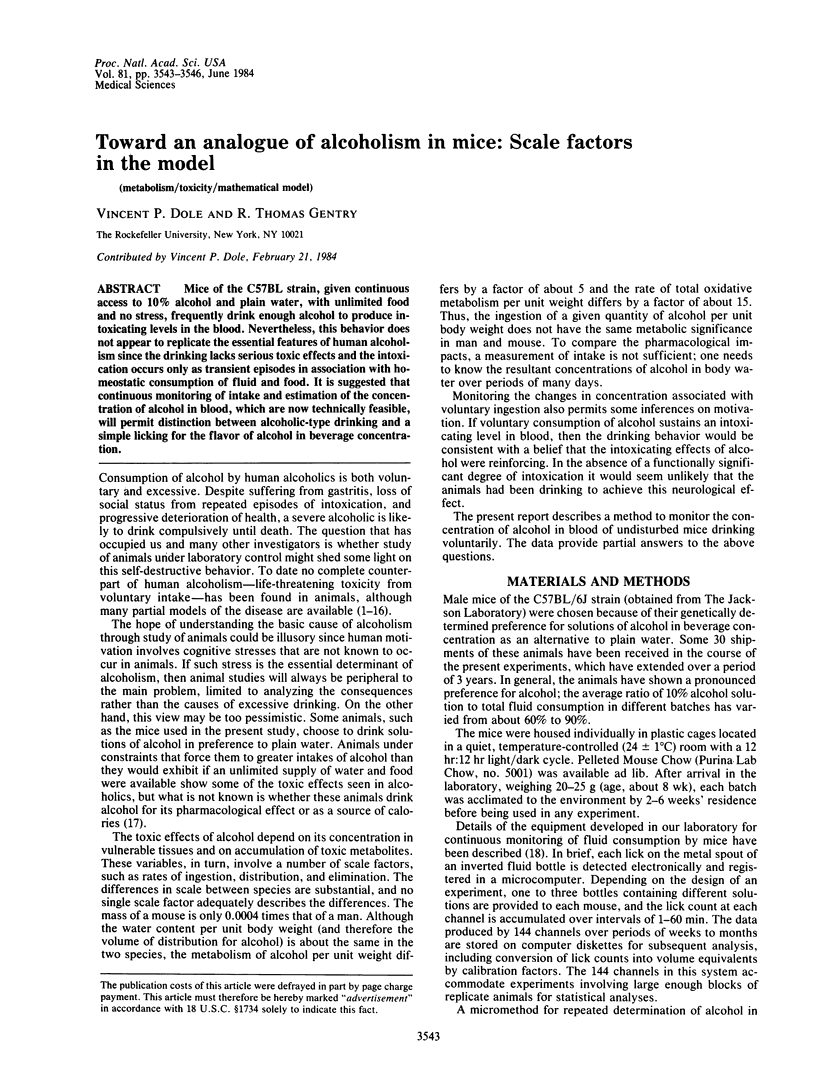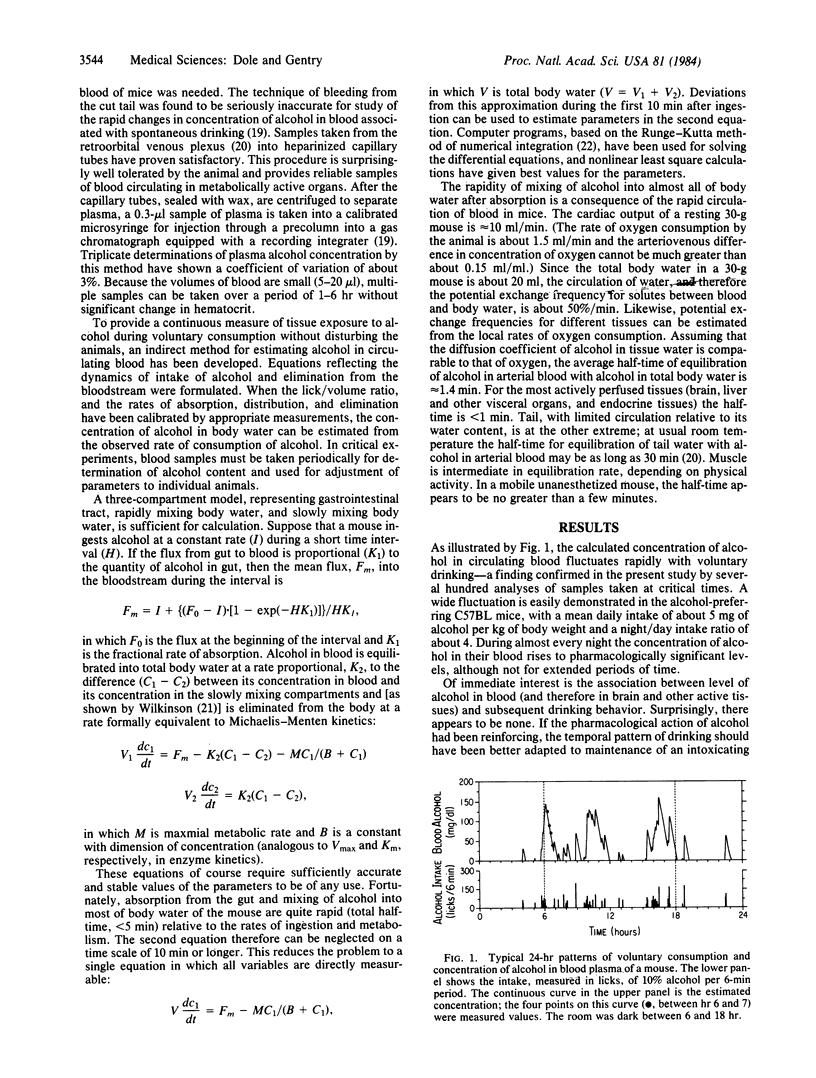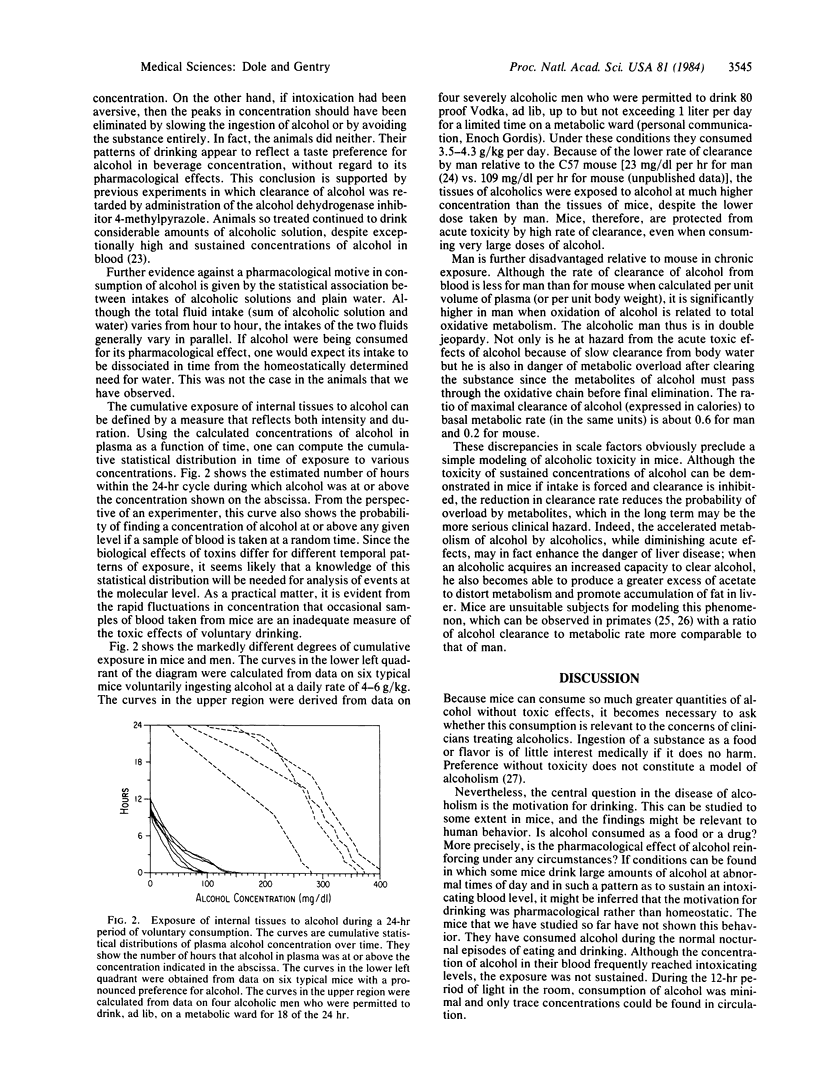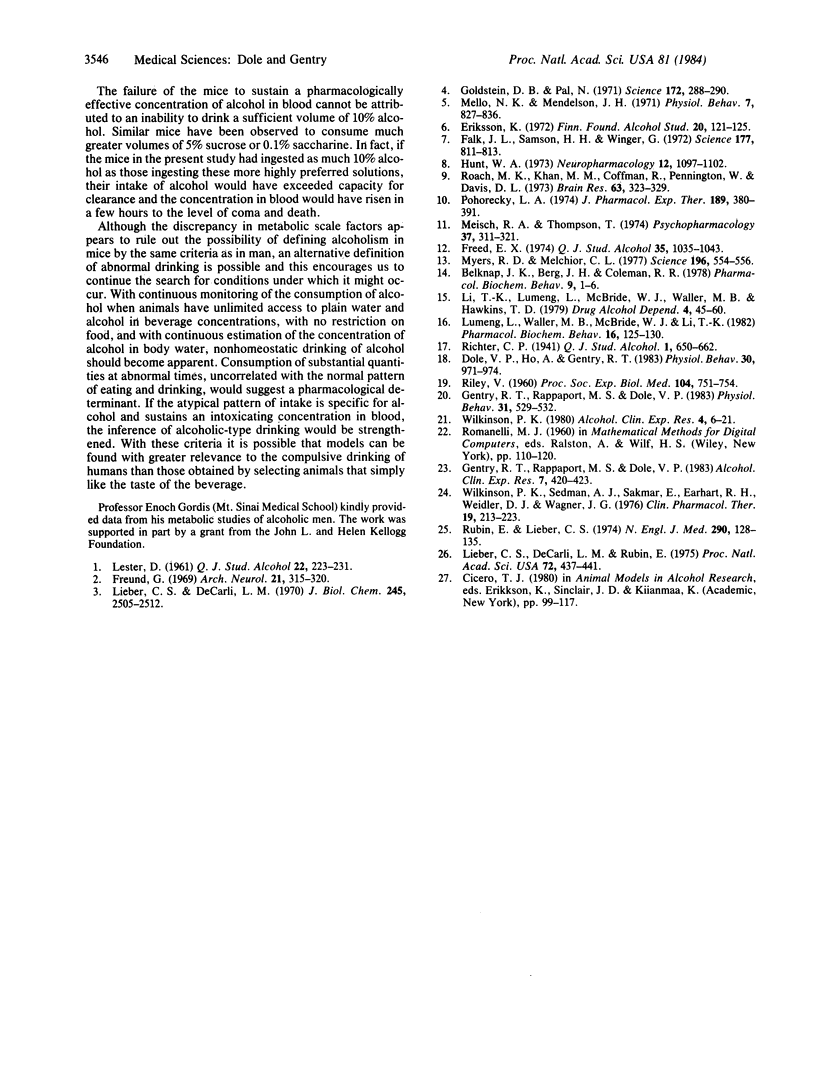Abstract
Mice of the C57BL strain, given continuous access to 10% alcohol and plain water, with unlimited food and no stress, frequently drink enough alcohol to produce intoxicating levels in the blood. Nevertheless, this behavior does not appear to replicate the essential features of human alcoholism since the drinking lacks serious toxic effects and the intoxication occurs only as transient episodes in association with homeostatic consumption of fluid and food. It is suggested that continuous monitoring of intake and estimation of the concentration of alcohol in blood, which are now technically feasible, will permit distinction between alcoholic-type drinking and a simple licking for the flavor of alcohol in beverage concentration.
Full text
PDF



Selected References
These references are in PubMed. This may not be the complete list of references from this article.
- Belknap J. K., Berg J. H., Coleman R. R. Alcohol withdrawal and magnesium deficiency in mice. Pharmacol Biochem Behav. 1978 Jul;9(1):1–6. doi: 10.1016/0091-3057(78)90003-5. [DOI] [PubMed] [Google Scholar]
- Dole V. P., Ho A., Gentry R. T. An improved technique for monitoring the drinking behavior of mice. Physiol Behav. 1983 Jun;30(6):971–974. doi: 10.1016/0031-9384(83)90264-0. [DOI] [PubMed] [Google Scholar]
- Falk J. L., Samson H. H., Winger G. Behavioral maintenance of high concentrations of blood ethanol and physical dependence in the rat. Science. 1972 Sep 1;177(4051):811–813. doi: 10.1126/science.177.4051.811. [DOI] [PubMed] [Google Scholar]
- Freed E. X. Fluid selection by rats during schedule-induced polydipsia. Q J Stud Alcohol. 1974 Sep;35(3):1035–1043. [PubMed] [Google Scholar]
- Freund G. Alcohol withdrawal syndrome in mice. Arch Neurol. 1969 Sep;21(3):315–320. doi: 10.1001/archneur.1969.00480150105013. [DOI] [PubMed] [Google Scholar]
- Gentry R. T., Rappaport M. S., Dole V. P. Elevated concentrations of ethanol in plasma do not suppress voluntary ethanol consumption in C57BL mice. Alcohol Clin Exp Res. 1983 Fall;7(4):420–423. doi: 10.1111/j.1530-0277.1983.tb05498.x. [DOI] [PubMed] [Google Scholar]
- Gentry R. T., Rappaport M. S., Dole V. P. Serial determination of plasma ethanol concentrations in mice. Physiol Behav. 1983 Oct;31(4):529–532. doi: 10.1016/0031-9384(83)90077-x. [DOI] [PubMed] [Google Scholar]
- Goldstein D. B., Pal N. Alcohol dependence produced in mice by inhalation of ethanol: grading the withdrawal reaction. Science. 1971 Apr 16;172(3980):288–290. doi: 10.1126/science.172.3980.288. [DOI] [PubMed] [Google Scholar]
- Hunt W. A. Changes in the neuro-excitability of alcohol-dependent rats undergoing withdrawal as measured by the pentylenetetrazole seizure threshold. Neuropharmacology. 1973 Nov;12(11):1097–1102. doi: 10.1016/0028-3908(73)90054-3. [DOI] [PubMed] [Google Scholar]
- Li T. K., Lumeng L., McBride W. J., Waller M. B. Progress toward a voluntary oral consumption model of alcoholism. Drug Alcohol Depend. 1979 Jan-Mar;4(1-2):45–60. doi: 10.1016/0376-8716(79)90040-1. [DOI] [PubMed] [Google Scholar]
- Lieber C. S., DeCarli L. M. Hepatic microsomal ethanol-oxidizing system. In vitro characteristics and adaptive properties in vivo. J Biol Chem. 1970 May 25;245(10):2505–2512. [PubMed] [Google Scholar]
- Lieber C. S., DeCarli L., Rubin E. Sequential production of fatty liver, hepatitis, and cirrhosis in sub-human primates fed ethanol with adequate diets. Proc Natl Acad Sci U S A. 1975 Feb;72(2):437–441. doi: 10.1073/pnas.72.2.437. [DOI] [PMC free article] [PubMed] [Google Scholar]
- Lumeng L., Waller M. B., McBride W. J., Li T. K. Different sensitivities to ethanol in alcohol-preferring and -nonpreferring rats. Pharmacol Biochem Behav. 1982 Jan;16(1):125–130. doi: 10.1016/0091-3057(82)90023-5. [DOI] [PubMed] [Google Scholar]
- Meisch R. A., Thompson T. Rapid establishment of ethanol as a reinforcer for rats. Psychopharmacologia. 1974;37(4):311–321. doi: 10.1007/BF00428917. [DOI] [PubMed] [Google Scholar]
- Mello N. K., Mendelson J. H. Evaluation of a polydipsia technique to induce alcohol consumption in monkeys. Physiol Behav. 1971 Dec;7(6):827–836. doi: 10.1016/0031-9384(71)90047-3. [DOI] [PubMed] [Google Scholar]
- Myers R. D., Melchior C. L. Alcohol drinking: abnormal intake caused by tetrahydropapaveroline in brain. Science. 1977 Apr 29;196(4289):554–556. doi: 10.1126/science.557839. [DOI] [PubMed] [Google Scholar]
- Pohorecky L. A. Effects of ethanol on central and peripheral noradrenergic neurons. J Pharmacol Exp Ther. 1974 May;189(2):380–391. [PubMed] [Google Scholar]
- RILEY V. Adaptation of orbital bleeding technic to rapid serial blood studies. Proc Soc Exp Biol Med. 1960 Aug-Sep;104:751–754. doi: 10.3181/00379727-104-25975. [DOI] [PubMed] [Google Scholar]
- Roach M. K., Khan M. M., Coffman R., Pennington W., Davis D. L. Brain (NA+ + K+)-activated adenosine triphosphatase activity and neurotransmitter uptake in alcohol-dependent rats. Brain Res. 1973 Dec 7;63:323–329. doi: 10.1016/0006-8993(73)90099-1. [DOI] [PubMed] [Google Scholar]
- Rubin E., Lieber C. S. Fatty liver, alcoholic hepatitis and cirrhosis produced by alcohol in primates. N Engl J Med. 1974 Jan 17;290(3):128–135. doi: 10.1056/NEJM197401172900303. [DOI] [PubMed] [Google Scholar]
- Wilkinson P. K. Pharmacokinetics of ethanol: a review. Alcohol Clin Exp Res. 1980 Jan;4(1):6–21. doi: 10.1111/j.1530-0277.1980.tb04785.x. [DOI] [PubMed] [Google Scholar]
- Wilkinson P. K., Sedman A. J., Sakmar E., Earhart R. H., Weidler D. J., Wagner J. G. Blood ethanol concentrations during and following constant-rate intravenous infusion of alcohol. Clin Pharmacol Ther. 1976 Feb;19(2):213–223. doi: 10.1002/cpt1976192213. [DOI] [PubMed] [Google Scholar]


